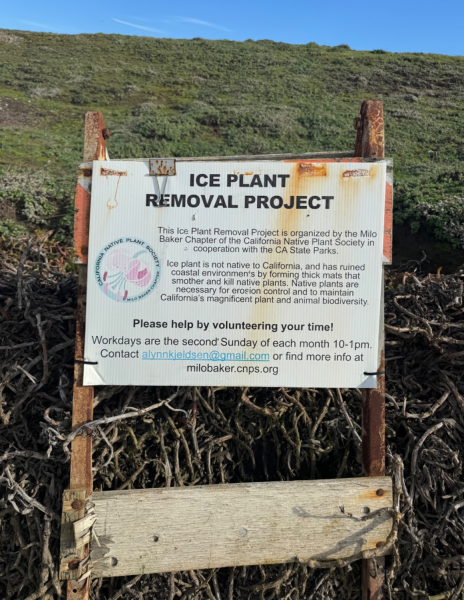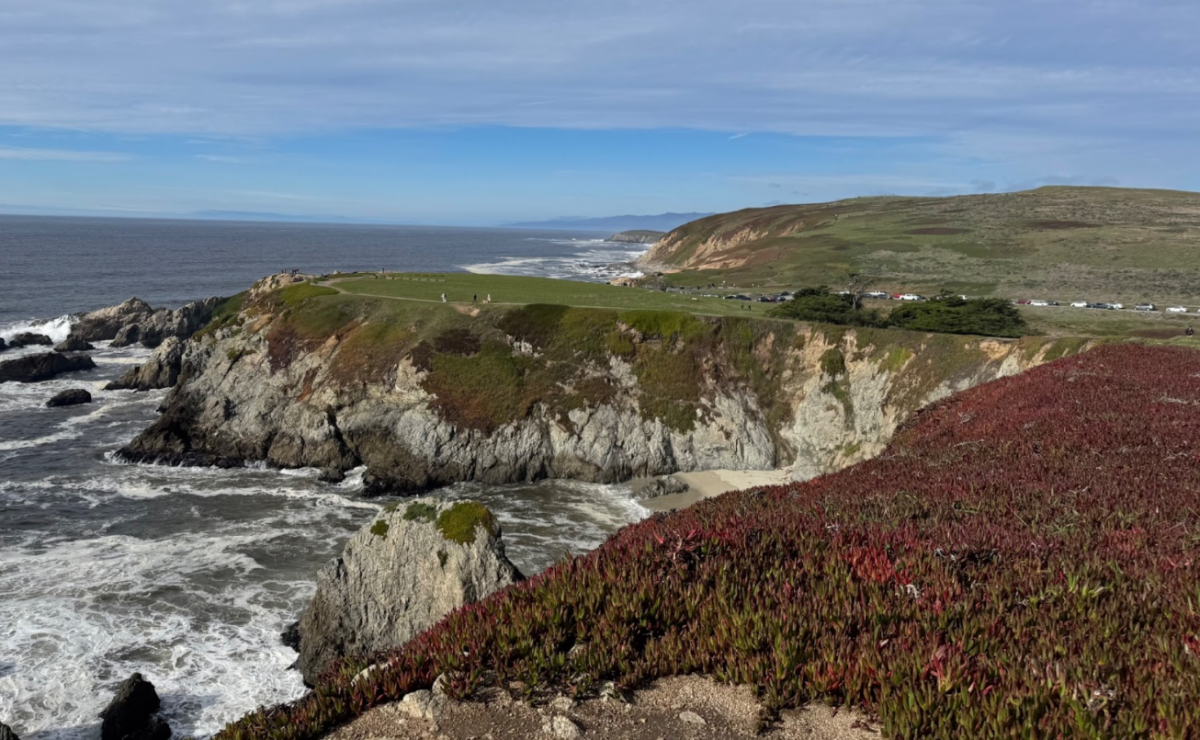If you have ever visited the northern Californian coast, you have most likely seen an ice plant. The ice plant is a succulent which spreads easily to form a carpet-like structure on the rolling coast hills. While it may appear harmless at first, the ice plant is the silent killer of many endangered native coastal species.
The ice plant, scientifically known
as Carpobrotus edulis, is not native to California but originates from South Africa. Around the fifteenth and sixteenth century, colonists unknowingly introduced the ice plant to North America by carrying it in their cargo. Later, in the early 1900s, it was intentionally brought back and planted along railroads to stabilize dirt and change the composition of the soil, making it a safer area for construction.

Along the coast of California, the ice plant grows rampant, taking over everything around it. It grows to more than three feet each year and chokes out the other species around it. During droughts this plant still survives from the water which it holds in its leaves, giving it the nutrients it needs to survive.
Although the ice plant appears to not affect the ecosystem, it is actually detrimental to the other life surrounding it. The sunny area and cold weather is the perfect climate for it to survive and grow stronger. When the invasive species spreads, it chokes the other plants, and takes up the resources that the other life needs. When all these plants are killed, the ecosystem is disrupted and changes the behavior of the natural habitat.
Being drought resistant makes it harder for other plants around it to access water, since the ice plant takes plentiful amounts of it as well as space. Unfortunately, some of the plants that are slowly getting killed are already rare endangered native plants.
The California Department of Fish and Wildlife (CDFW) has volunteer groups which go out and remove the ice plant. The CDFW also accepts donations to save the native plants put at risk. Another wildlife organization is the Big Sur Land Trust (BSLT) which removes invasive plants. The BSLT is located in Monterey and protects the native plants by uprooting the invasive species.

Next time you visit the local coast and see an ice plant, you know that it’s not as friendly as it seems. Even though it is impressively resilient, it is still killing the other plants and disrupting the peace of the natural habitat.

























